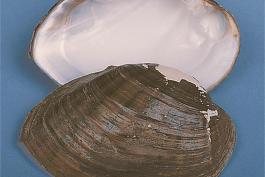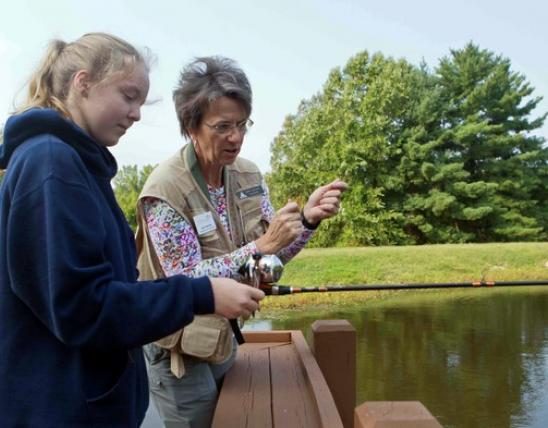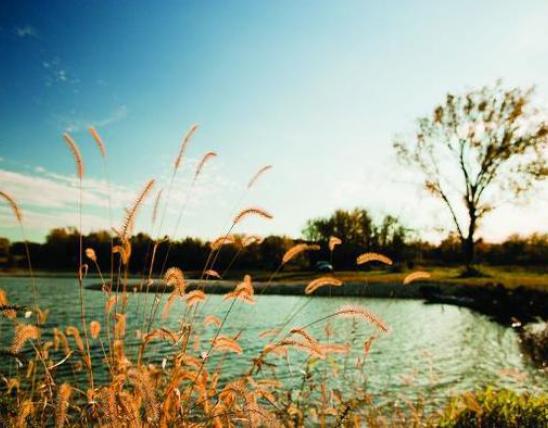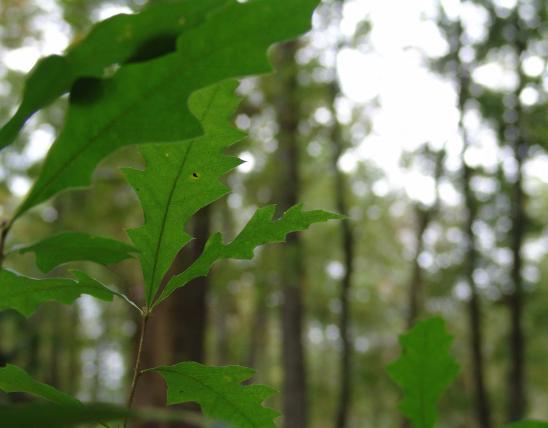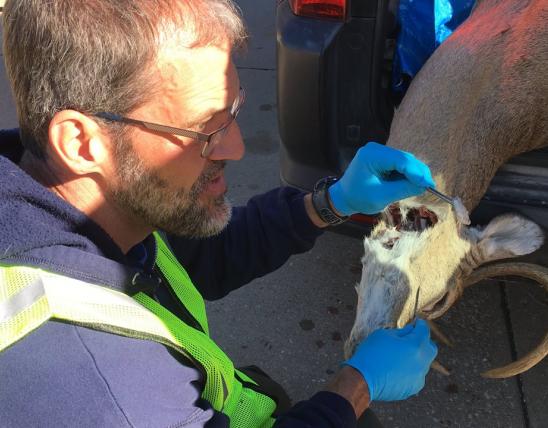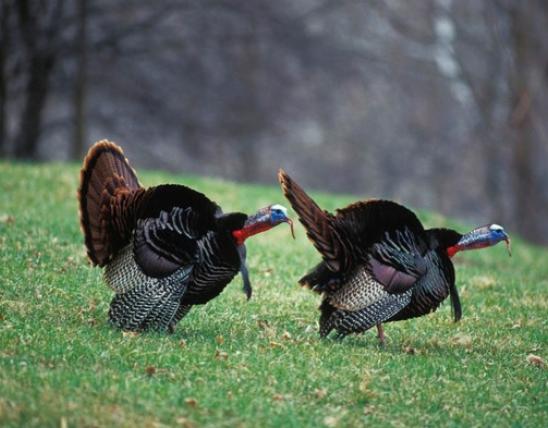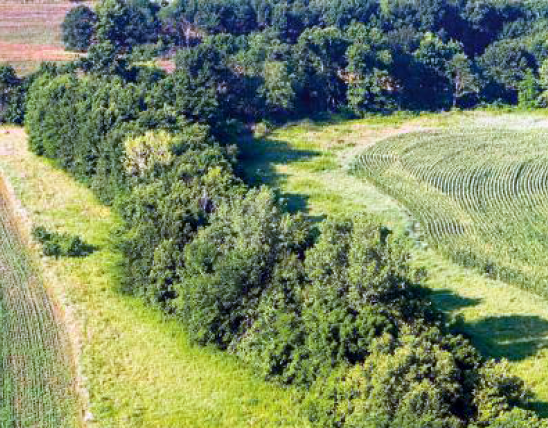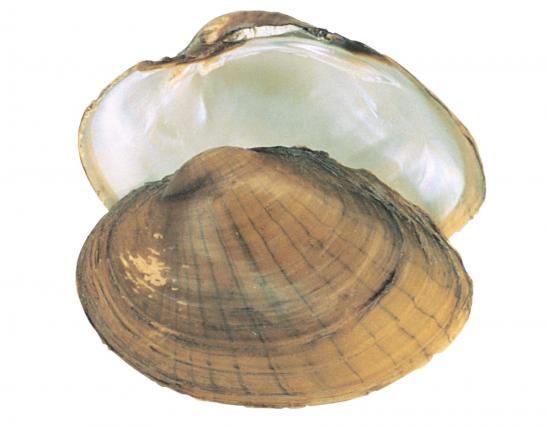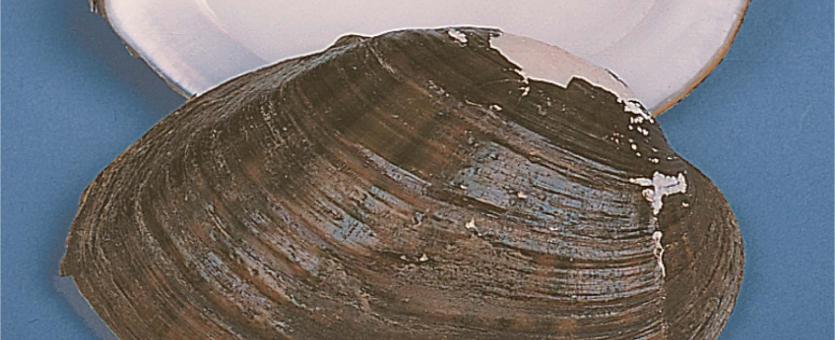
Shell is thick, heavy, oblong and moderately inflated. Umbo is low and slightly above hinge line. Yellowish-brown epidermis, becomes darker with age; green rays may be present. Inside shell beak cavity is shallow; large pseudocardinal teeth, serrate and slightly elevated; lateral teeth blade-like, straight to slightly curved, moderately short and serrate; nacre (lining) white, rarely pink-tinged.
Similar species: The plain pocketbook’s shell is more inflated, less stout, thinner, more square (females) or rounded (males) and has a higher umbo.
Adult length: 3-7 inches.

Widespread in southern Missouri; also Salt River. Found in all medium and large streams draining the Salem and Springfield plateaus.
Habitat and Conservation
Medium to large rivers in relatively swift water with a stable mix of gravel, sand and cobble.
Food
Algae and fine particles of decaying organic matter; extracts nutrients and oxygen from water drawn into the body cavity through a specialized gill called the incurrent siphon; sediment and undigested waste are expelled through the excurrent siphon.
Status
Common. One of the most abundant and widespread freshwater mussels in the southern half of Missouri.
Life Cycle
Males release sperm directly into water. Females downstream siphon sperm into the gill chamber, where eggs are fertilized. Eggs mature into larvae (called glochidia), which discharge into the water and attach to host fish. This species uses smallmouth bass, green sunfish, bluegill and others. The tiny mussel eventually breaks away and floats to the bottom of the stream, and the cycle repeats.
Human Connections
Mussels are excellent biological indicators of water quality because they are long-lived and relatively immobile, accumulating contaminants in water that can be scientifically analyzed. This species was used in the button industry; also valuable in the polished chip industry.
Ecosystem Connections
Mussels act as nature's “vacuum cleaners,” filtering and cleansing polluted waters. They are also an important food source for other species in the aquatic environment.

